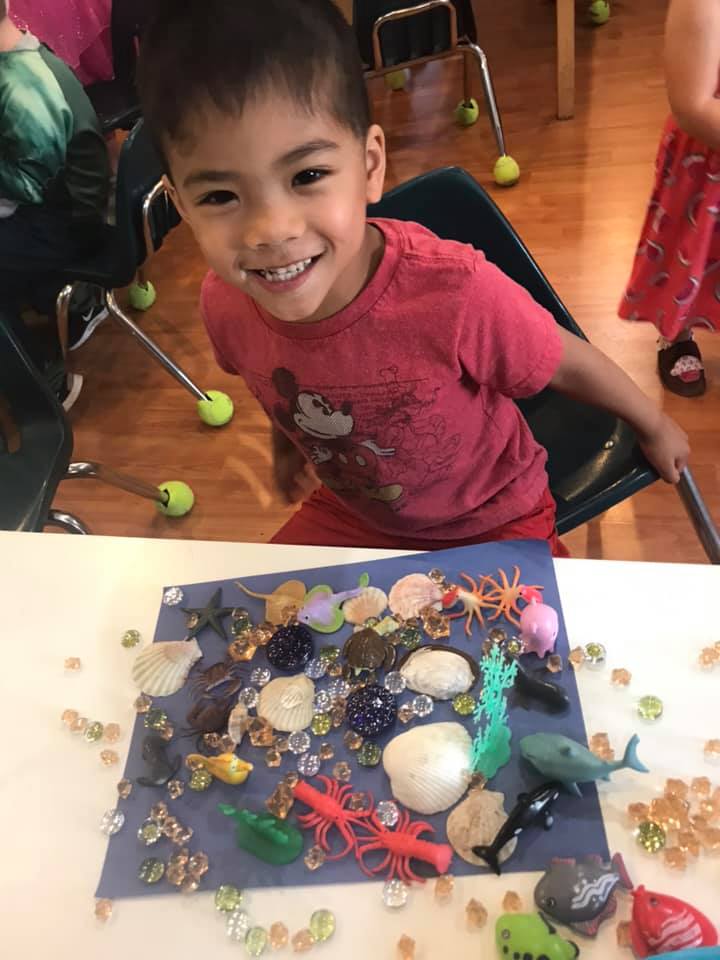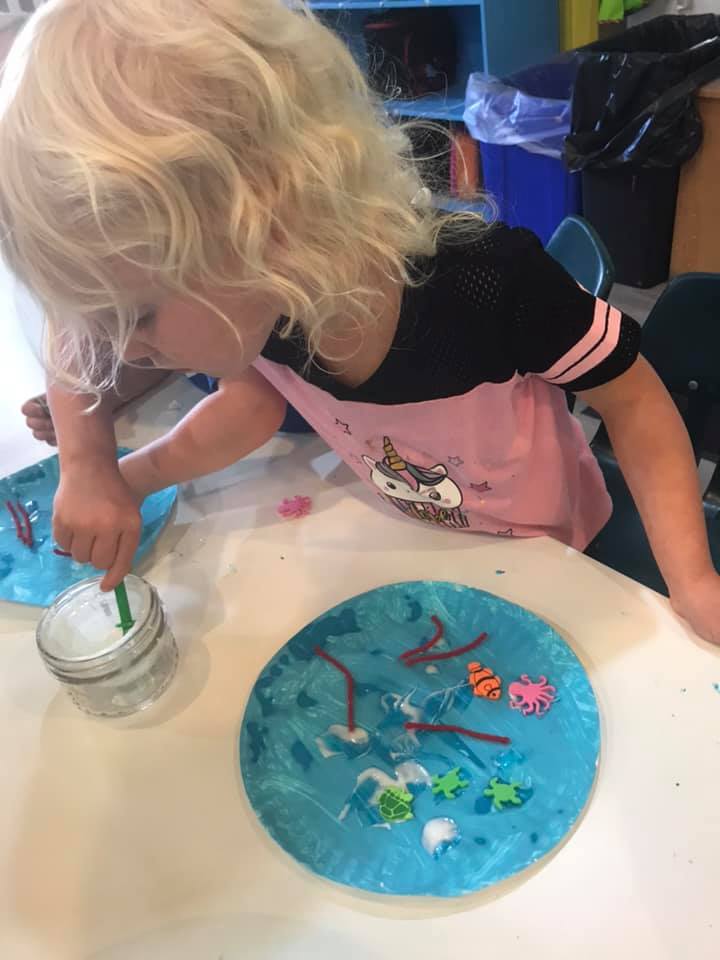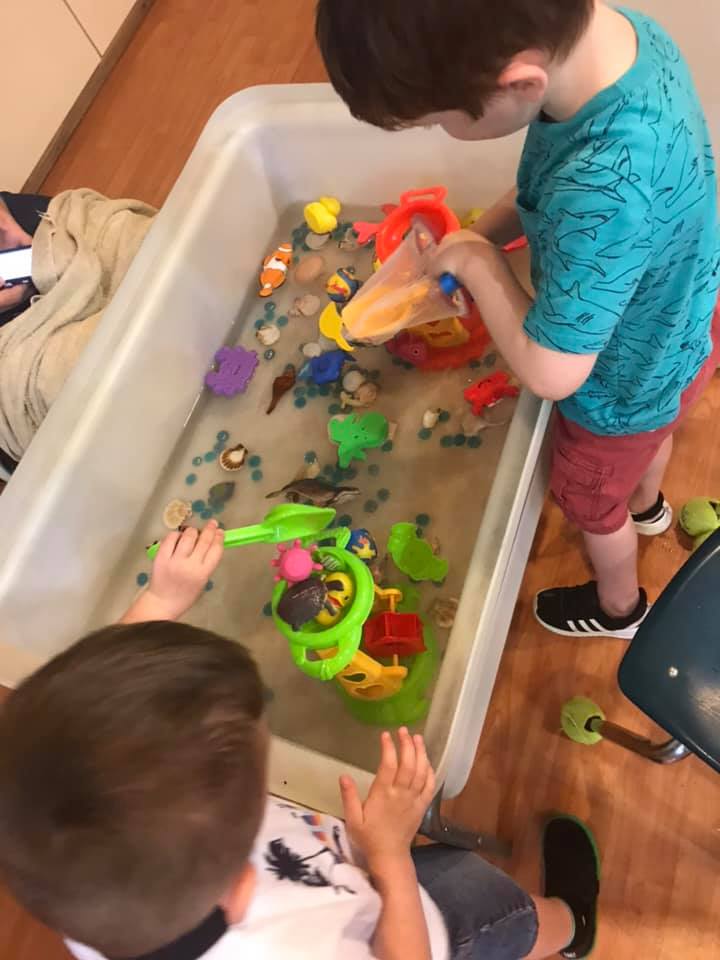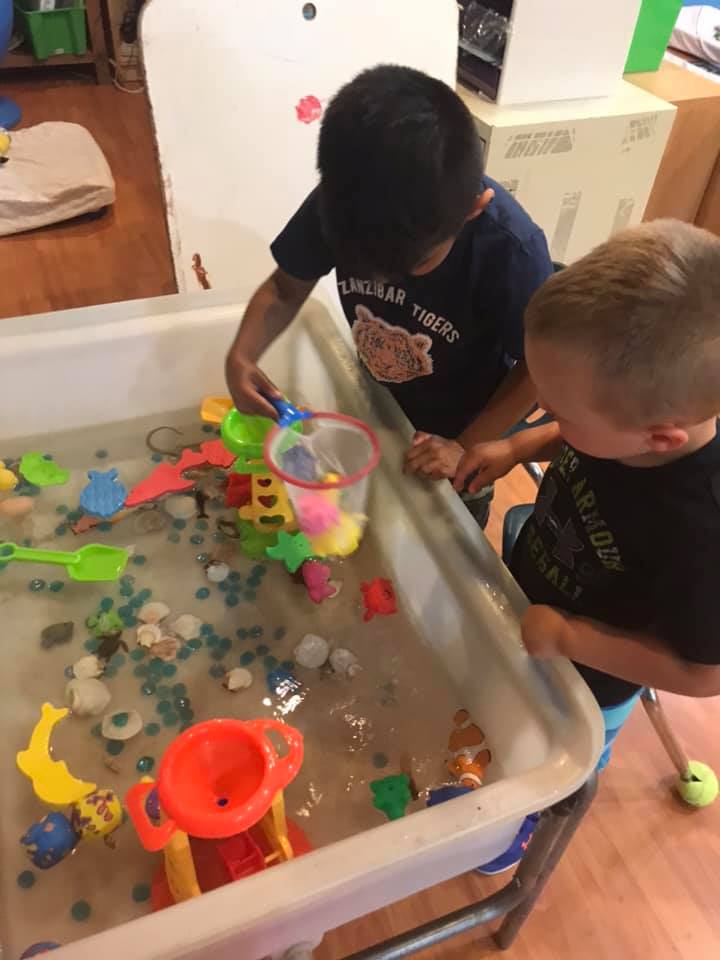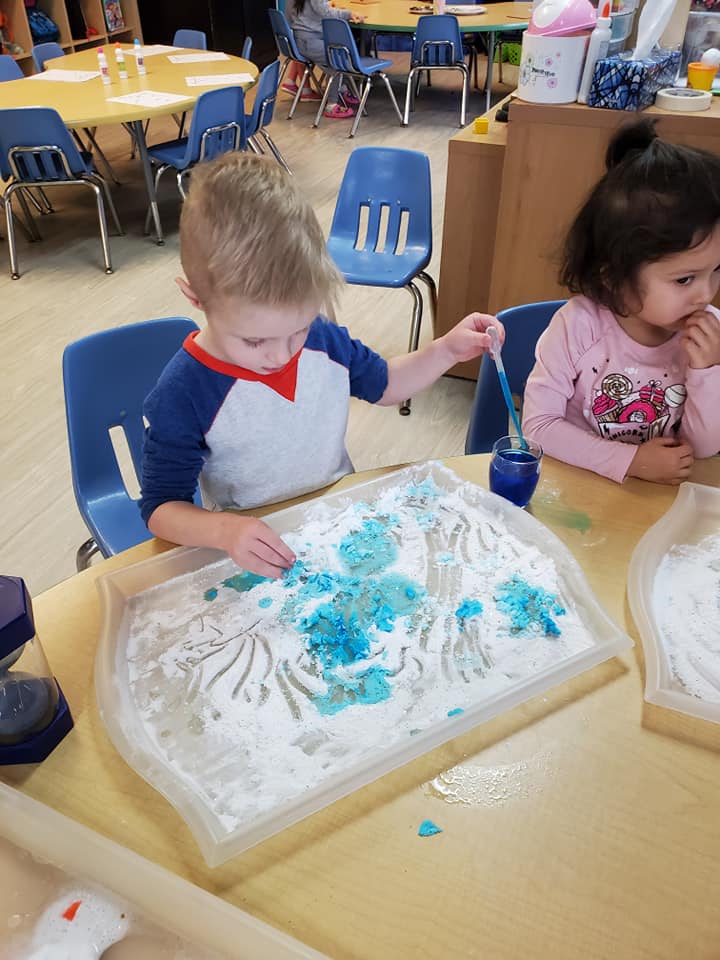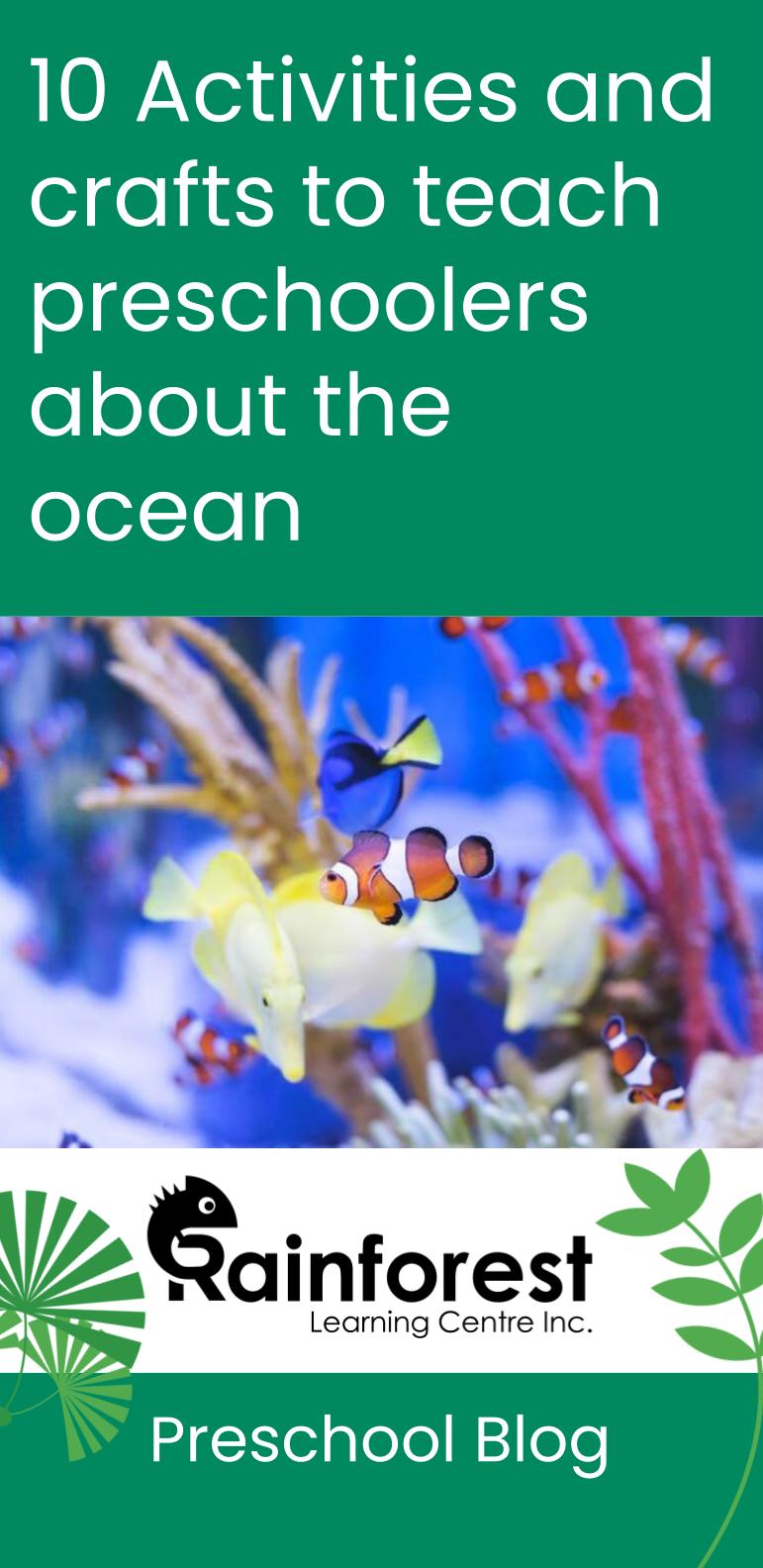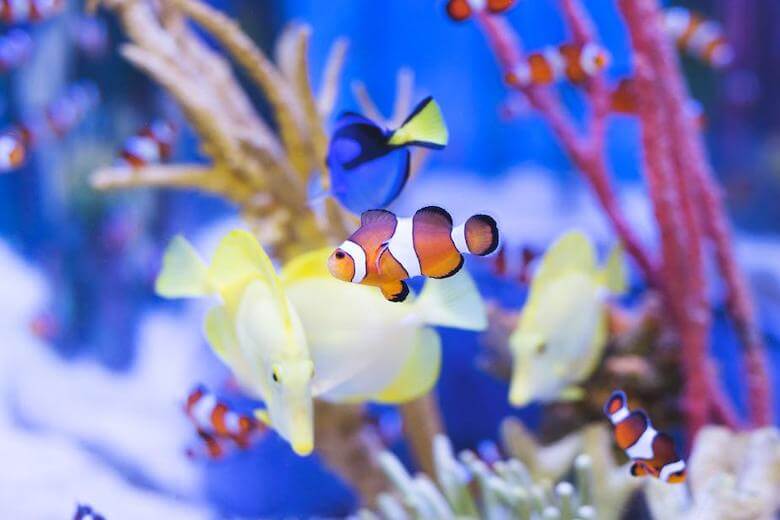
Setting up thematic curriculum lessons is a great way to not only stay focused, but also to incorporate plenty of interdisciplinary learning across common subjects. For example, nearly any theme you pick will involve crafts, which involve sensory activities, creative expression, story telling, reading, science experiments and so on. And of course, there are probably children’s songs on every subject you can imagine.
In this article, we’ll give some inspiring ideas for activities and crafts to teach preschoolers about the ocean. You can do these as a homeschooler, in daycare (even two and three year olds can do some of these things), or in grade school, too.
1) Visit salmon hatcheries and aquariums on a field trip
If you live near rivers and oceans, like we do in the Vancouver and Fraser Valley areas, a great field trip idea is to visit the salmon hatcheries and aquariums. They’ll often have guided tours and explanations on what is going on in there. But even if early childhood educators do a bit of basic research beforehand, they can also put on lessons at these spots.
In the Metro Vancouver area, we can visit:
If you have one nearby that will allow visitors, another option is to visit an oyster farm or pearl farm. Or, watch educational videos of these places on YouTube.
2) Start a classroom fish tank!
Whether with tropical fish, tiny turtles or other sea creatures, your classroom can learn about fish by creating a little mini ‘ocean’ for them to swim in. Get the kids involved in every step of the set up, including water treatment, creating habitats, and so on. Of course, feeding the fish can be a daily activity. And, you can explain why whales, dolphins and sharks can’t go in your classroom fish tank – ha!
Cleaning the tanks may be something the kids should watch, but if you do involve them in it, be careful so they don’t get sick from bacteria!
3) Make colourful, paper jellyfish, lots of jellyfish
Probably the easiest craft idea for your ‘ocean week’ (or month) theme is to make paper fish. Paper jellyfish come in many forms, and can be made easily, since their shape is so simple. You can cut a paper plate in half to make the head, and the tentacles can be anything from pipe cleaners, to party streamers, to yarn, and anything that looks like pretty string.
Add some paint, glitter, googley eyes and you’ve got colourful jellyfish! You can also add string to hang them like puppets.
When you do this activity, be sure to let the kiddos know that jellyfish in ‘real life’ are not something we touch! Let them know what to do if they do get stung.
Of course, you can make and paint paper sharks, salmon, or any other fish you want!
4) Make a flat 3D ocean diorama
Ok, we know that dioramas are usually made in boxes, but you can use 3D objects like colourful plant rocks, sea shells and plastic, ocean-creature toys to create a mini ocean or coral reef. Lay down a piece of blue construction paper (or paint a panel of cardboard), and then have the kids arrange, and glue down their 3D objects.
Glue, of course, is optional. The kiddos can also just play make-believe with the little objects, and continuously rearrange them on their sheet, or with others.
This also works with a circle paper plate that you paint blue. Glitter always makes things prettier, too!
5) Make ocean-themed sensory sand boxes, glitter sacks and water buckets!
Sensory stations are all-the-rage in the preschool world, where the classroom is a teacher, too. Early childhood educators teaching children about the ocean can set up colourful sand boxes with (safe) sea shells, toy turtles and fish, coral-shaped sponges (and even real sponges!).
For a water bucket, add in some toy fish (or fish-shaped sponges) with some blue glitter or food colouring. To make it a little fun, you can add some soap bubbles too. Call it ocean foam, it’ll pass! If you have a pond net, the kids can also ‘go fishing’ and see what they can scoop up!
Let the kids get their hands wet and dirty, and feel all those different senses while imagining they are in the ocean!
Another sensory activity is to simply put glitter and water in a ziplock, tape it to a table, and let the kids squish. Clear gel or other slime recipes could work with this too. Just don’t forget the glitter, the best part!
6) Make an ocean volcano
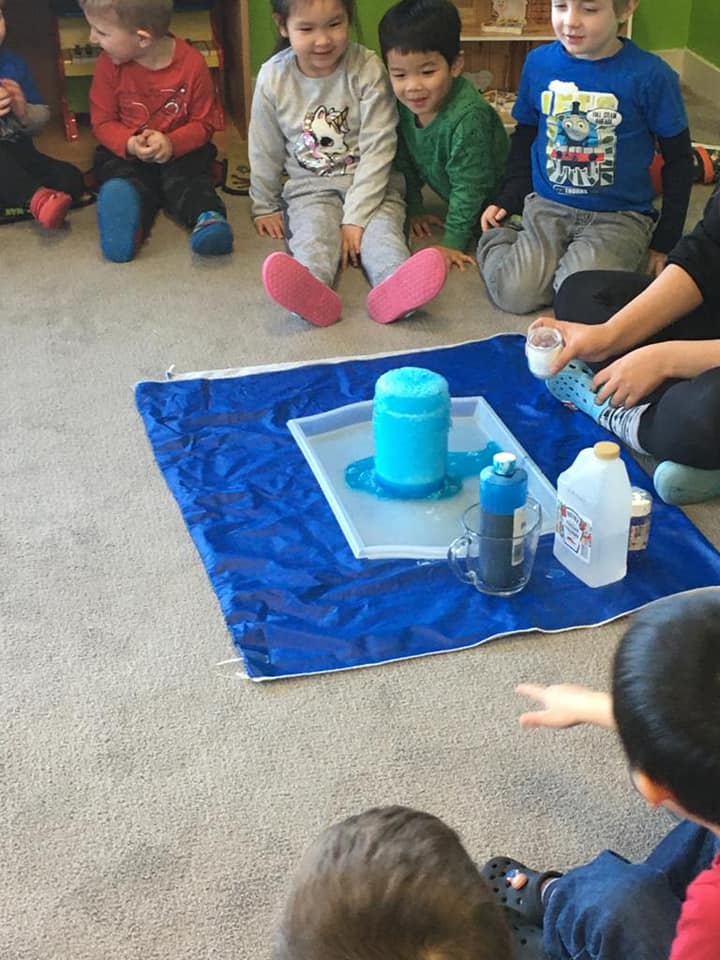
Did you know that oceans contain mountains and volcanoes? Yes! This is your excuse to do a foamy science experiment with your classroom during ocean theme lessons. Use the classic baking soda and vinegar, and add some soap and blue food colouring, to make it look like the ocean is exploding! Great fun, always a winner.
You’ll probably want to do this one during circle time, when all the kids can watch together. It’s gonna be messy! So use a tarp or tray, or something to contain the overflow.
7) Make ocean jell-o, shark candy lemonade and blue snacks
Gummies come in shark moulds and fish shapes, did you know that? You can use those to make a blue jell-o dish, and get the kids to add in their ocean creatures. Involve them in the process of making this delicious snack. When it solidifies, the sharks and fish will show through the transparent jell-o, making an ocean scene, without having to visit the actual ocean. When they eat up, they’ll get some candy treats!
Another way to use shark and fish gummies is by putting them in a lemonade or kool-aid mix. See if you can find a way to get a ‘blue’ colour in there (blueberries, maybe?). If not, it’s ok, it’s just for fun.
Use this opportunity to teach the preschool classroom about sharks and the different types of fish (based on what you’re using in the snacks).
8) Invite water animals to your classroom
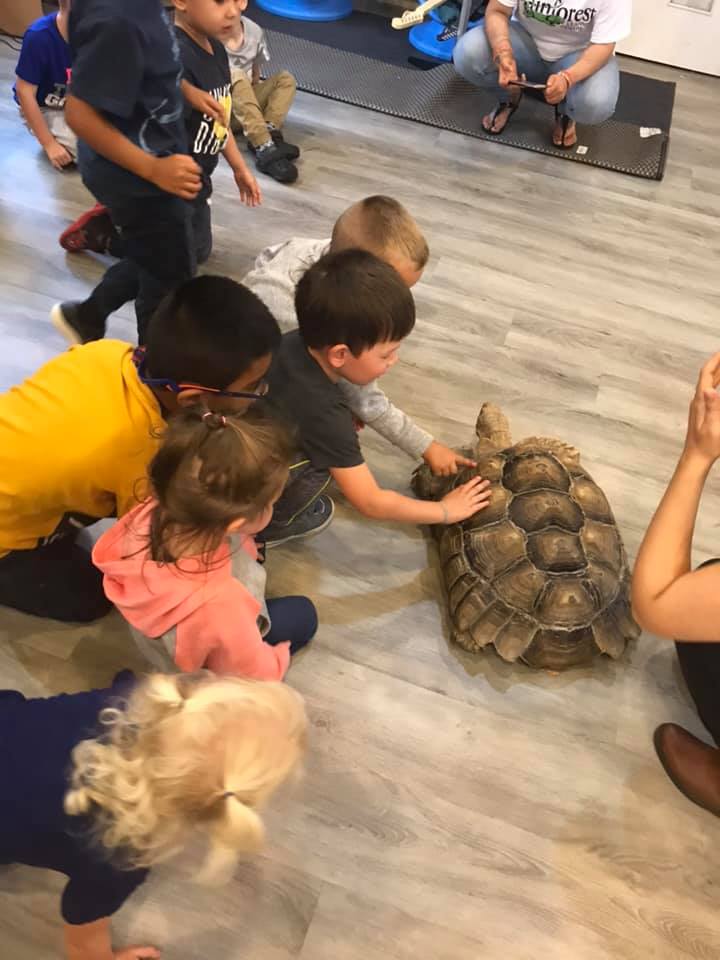
Ok, we’ll admit, it may be hard to get actual, ocean turtles and crabs to your classroom. But a close second would be a local wildlife organization that may have some fresh water turtles and reptiles they can bring over. The kids can get an up close look at these creatures. They’ll learn how they move, what they like, what they don’t like, and so on. But then, you can teach them the difference between animals that live in the ocean, and the ones that live in lakes and rivers, or in different climates.
If this is a stretch, and you have an upcoming lesson on pond life, maybe wait this one out.
9) Go swimming like little fishies!
What better time to take a field trip to the local swimming pool, than when you’re learning about the ocean? Your preschoolers can learn to swim like little fish, be little mermaids, or play like dolphins. Be sure everyone is wearing a life jacket and you have lifeguards nearby. Stick to the shallow areas.
Pro tip: see if you can find a local wave pool to simulate ocean waves. Some pools also have foam boats that kids can float around in. Play imagination games with them!
10) Visit the beach to learn about visible ocean life (and maybe even the problem of pollution)
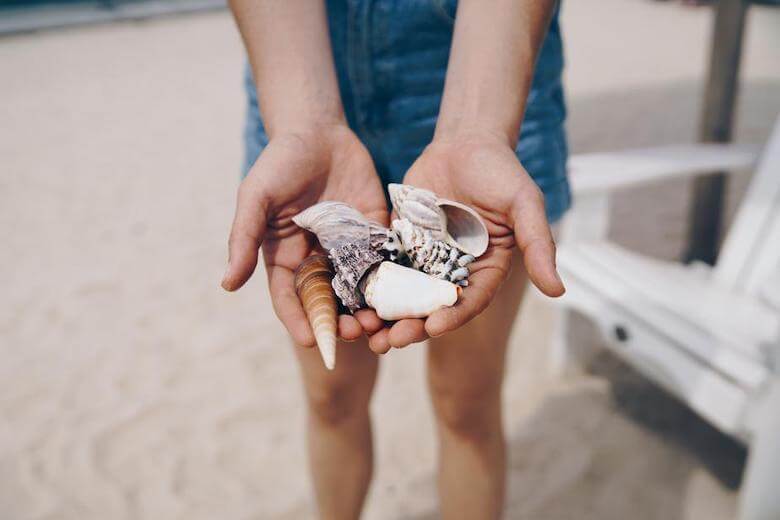
If you live near an ocean, visiting an actual beach, to see an actual ocean, would be a fantastic idea during your ocean themed curriculum. While you may not catch a glimpse of giant whales or blowfish, you should be able to catch some sandy floors, find seaweed and barnacles, and of course, sea shells. Be sure your local laws allow you to take sea shells before you go collecting them.
If you have the equipment and licenses for it, you can also incorporate crabbing or fishing activities while at the beach. Or, you can find people doing this on the piers at the beach, and they may be friendly enough to explain what’s going on to your preschoolers.
On this trip, you’ll likely find some trash cans and sadly, some trash on the beach. This is a great opportunity to teach the kids about ocean pollution, and the importance of not leaving our plastics on the beach. It can be part of your recycling lessons too. If it’s safe, maybe your class can do an ocean clean up activity too. Bring hand sanitizer and gloves though!
